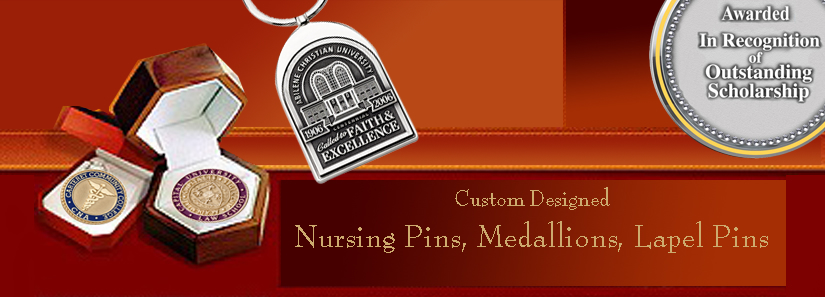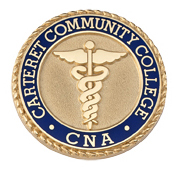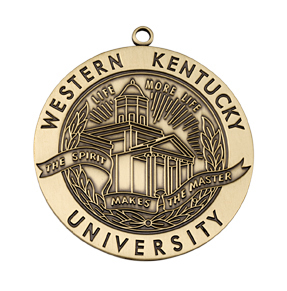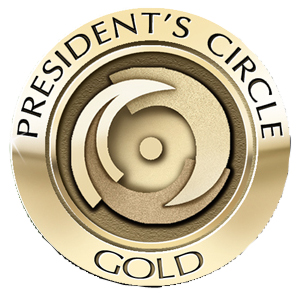We Can Produce Your Custom Jewelry In A Variety Of Metals
Gold Quality
Gold’s purity is measured in "karats". The term "karat" harks back to the ancient bazaars where "carob" beans were used to weigh precious metals. 24 Karat gold is pure gold, but its purity means it is more expensive and less durable than gold that is alloyed with other metals.
Karats Percent
(parts of gold per 24) (parts of gold per 100)
24 Karat 100 percent
18 Karat 75.0 percent
14 Karat 58.3 percent
10 Karat 41.6 percent
Gold Weight
The weight of gold or gold articles is usually expressed in troy ounces and/or pennyweight (dwt)
1 Troy ounce = 1.097 ordinary ounce
1 Troy ounce = 20 pennyweight (dwt)
The "d" in the traditional symbol for pennyweight (dwt) is from the latin denarius, the small Roman coin which was the equivalent of a penny.
Gold Color
Yellow Gold is alloyed with silver and copper. It is the most frequently used type of gold there is.
White Gold is alloyed with a large percentage of silver and is therefore more expensive than yellow gold. White gold is highly reflective and not subject to tarnish
Rose Gold is alloyed with copper and silver.
Ex: 14kt yellow gold is 58.3% gold, 30% silver & 11.5% copper
14kt rose gold is 58.3% gold, 9% silver & 32.5% copper
Gold Markings
By U.S. law, every gold article must have a karat mark. In addition to the karat mark, every piece of gold jewelry should be stamped with a hallmark or trademark of the manufacturer.
Gold Regional Preferences
Each part of the globe has very different expectations of what "gold" is.
United States 14karat/10karat
European Union 18karat/14karat
Mid-East 22karat/18karat
Far-East 22karat/18karat/14karat
10 karat gold in the U. S. is very common and an acceptable alloy. Other parts of the world do not recognize or accept jewelry marked 10K as precious.
Gold Care
Gold is durable, sturdy, dependable. However, to get a lifetime of enjoyment from your jewelry:
Keep your gold jewelry free from dust, moisture, perspiration and make-up
Do not wash your gold jewelry with ordinary soap and water, as this will leave a dull film on the surface. Instead, clean gold jewelry with a jeweler-recommended cleaning solution or an ultrasonic machine.
Avoid wearing gold jewelry when using harsh chemicals or doing rough work.
Protect your gold jewelry by storing it in a fabric lined jewelry box or wrapping it in a soft cloth when not being worn.
Silver Information
History
Silver is the queen of metals; gleaming and elegant, cool to the eye, sensuous to the touch. Silver is one of the first metals to be used by humans. The art of silver working dates back to ancient Byzantine, Phoenician and Egyptian empires. Silver is also the brightest reflector of any metal and can be polished to a high sheen that even platinum can’t achieve. In fact, the chemical symbol for silver, Ag, is derived from the Latin, argentum, meaning "white and shining".
In recent years, silver has lost much of its value as a reserve metal and a traded commodity. However its low price often means it acts as a leading metal in jewelry fashion. Silver ("white" color) is popular today among younger demographics attempting to achieve a less formal look in their accessorizing, and among those who simply find gold and platinum too old-world and ostentatious.
Silver Quality
Fine silver in its natural state, 999/1000 pure, is almost as soft as gold, too soft an element for practical jewelry. To make it workable, an alloy such as copper is added. The following are the more common silver alloys:
Sterling Silver: A mixture of 92.5% silver and 7.5% metal alloy
"Mexican Silver": 90% -99% pure silver
Coin Silver: 90% pure silver and 10% metal alloy
German Silver or Nickle Silver: A silver white alloy consisting of copper,zinc, and nickle
Vermeil: Sterling Silver electroplated with karat gold.
Silver Care
There is no mystery to caring for your fine silver jewelry. Just follow these tips:
Store your silver in a cool, dry place that is preferably airtight, to avoid oxidation. Do not store directly on wood , which often contains acids that can affect silver’s surface.
Store items in a tarnish-proof cloth, or in drawers with tarnish resistant strips. Store each item individually, either in its own soft pouch or in a separate compartment of your jewelry box.
If a piece of silver jewelry becomes tarnished, use a paste, liquid polish or a treated cloth to restore its original luster. |




